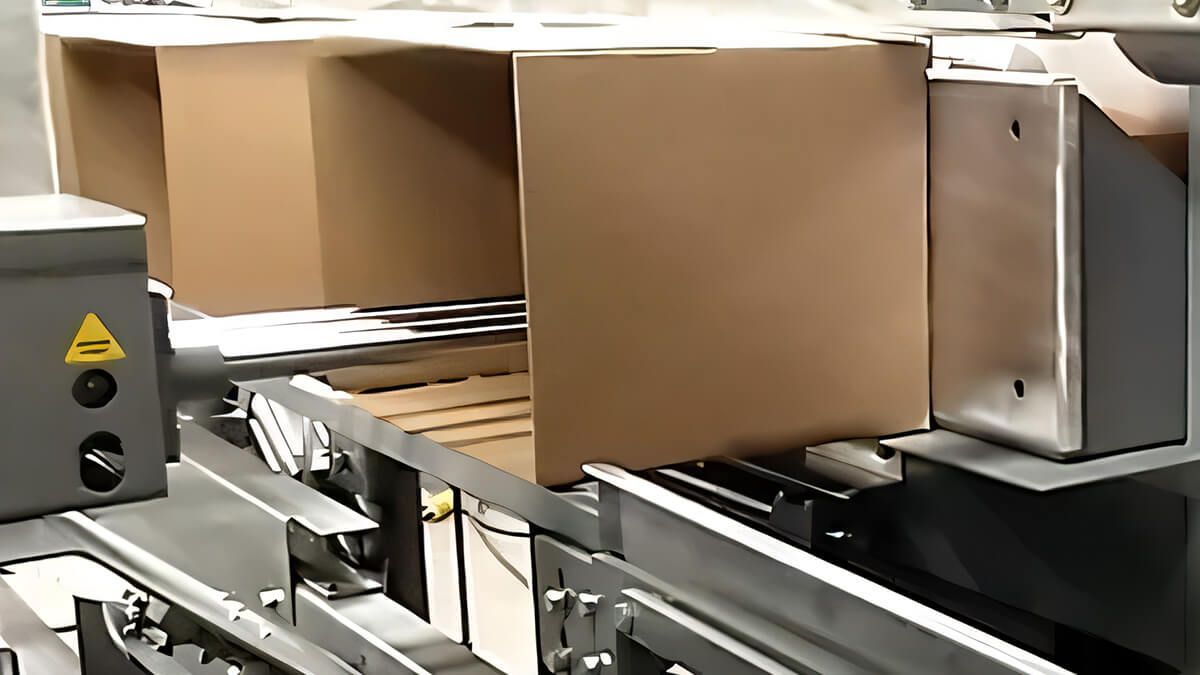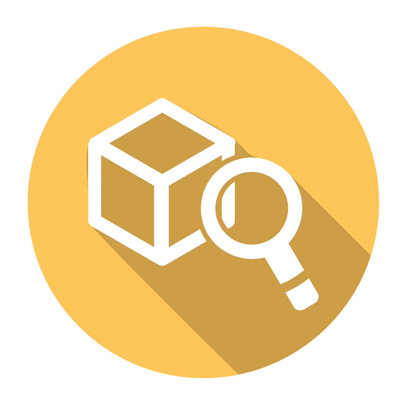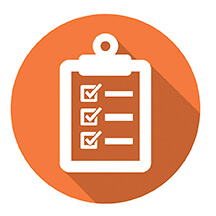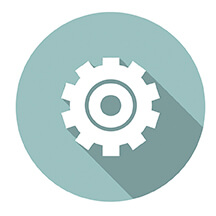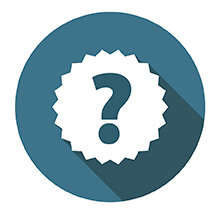A-B-C Blog
How to select a case erector: 4 key factors that affect ROI
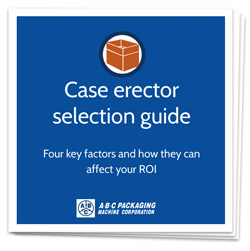
Selecting a simple packaging machine such as a case erector can be a complex process. Why? There are many factors to consider and methods to accomplish the task of setting up a corrugated KD, sealing it, and supplying it to your packaging line. Different suppliers have various reasons for their machinery designs, and it is up to you, the end-user, to determine the right machine for your application.
This guide can help you with the selection process. In our many years of building case erectors, we know the right machines can help manufacturers increase production and reduce their costs. And we’ve also seen what can go awry when the wrong machine is installed. Considering these key factors will give you the knowledge to find the best case erector for your application.
Considering an automatic case erector
for your line?
Investing in a quality case erector can streamline your packaging process, prioritize operator safety and efficiency,
and improve your overall operation. This investment can also significantly reduce long-term costs by reallocating
existing staff to higher value tasks. Additionally, with the rise of e-commerce and online shopping,
efficient shipping processes have become crucial for businesses to stay competitive.
Here are four key factors to consider to make the right decision.
Factor One: Your Corrugated
The only job of the case erector is to feed a KD, open it, fold the flaps and seal them securely. In a perfect world, this job would be simple and repeatable. But in today’s world, there are variables that you may not be able to control, so it is important that your case erector can accommodate them. If you don’t, you may be facing machine jams, misfed cases, or unsealed cases resulting in unplanned downtime and lost production. Some common culprits include:Off-spec board: Defects include misaligned slots, poor score lines, incorrect manufacturer’s joints, or over-glue on the joints that seals the KD shut
Recycled board: Can often vary in consistency. Also it can be difficult for hot melt to penetrate recycled fiber and form a secure seal
Plant conditions: Temperature, humidity, storage conditions and handling that can create warped or damaged KDs
Variations in liner board: All major corrugators inter-ship liner board to save on freight costs. Thus, cases from one supplier can have a wide range of porosity which can affect performance.What can you do?
Back in our perfect world, you’d ask your corrugated supplier for consistent board with no manufacturing defects, and control your plant to ensure proper storage and handling. But in the real world your best bet is to make sure your case erector can overcome these obstacles and keep on running. Here are some things to look for:KD feed design A KD feed that contacts the case at multiple locations is typically best at accommodating warped and band-marked cases. KD stack style is another issue. Vertical magazines require back pressure to hold the stack in place, which can cause misfeeding of cases affected by humidity. A horizontal feed magazine that lifts cases from the top of the stack eliminates back pressure requirements.
Case opening mechanism Cases with off-spec manufacturer’s joints can create problems with minor flap closing and cause sealing section jams. Ask potential suppliers how their erectors handle this potential problem.
Case squaring Out-of-spec KDs often form unsquare cases and belt drive case transfer can amplify this effect. Look for a case transfer that precisely controls the case during transfer and squares it during sealing.
Factor Two: Your Specs
Although you may know your current case erecting specs, it can be difficult or impossible to predict what you need next month or next year. How to be sure to have the capability to meet your near-future needs without costly upgrades or a new machine, and yet not “over spec” the machine you are buying today? Plus a few more observations....
What can you do?
Realistically evaluate your current needs If your line is running at 10 cases per minute, you probably don’t need expansion capability to 30 cpm unless that need is on the immediate horizon. While a high speed case erector can certainly do the job at a lower speed, high speed machine technology is more expensive and you may be paying for features that you don’t need.
Then, build in a cushion It’s good practice to purchase an erector at 10-15% more cases/minute than your line is currently running. This will give you a cushion for unplanned production events. If your plans include a line upgrade, add your near-future speed projections to this number. Having a discussion with your prospective suppliers about your needs gives you the benefit of their experience in this area.
Buy a standard model Most case erectors run a wide range of cases so it's fairly easy to find a standard model for most cases. However, if your specs are outside the norm, bring this up early in the discussion with your potential suppliers. This will help you to narrow your selection to standard machines that suit your needs. Optional equipment and custom engineering will cost more, but if that's the only option, you can discuss this with the OEM to minimize the impact.
Reduce human intervention Typically you need an attendant to load the KD magazine. A machine with a large capacity, easy-load magazine will minimize this need and related cost, and extended magazines are available. Consider a low-case warning beacon/alarm as a refill reminder to prevent case runout and loss of production.
Consider your sealing method Your sealing method will affect your cost of production, so here are some facts if you have the option to make this choice:
Tape
• Lower initial machine cost
• Higher expendable (tape) cost
• More frequent intervention to replace tape rolls
• Not optimal for high speeds
• Tape quality can affect performance (higher cost)
Hot Melt Adhesive
• Higher initial machine cost
• Lower expendable (hot melt) cost
• Hot melt unit will require maintenance
Factor Three: Your Packaging Line Operation
Downtime is required for changeover and maintenance, but there are ways to manage these activities and their related costs.
What can you do?
Analyze quick changeover claims Virtually every case erector manufacturer will tell you their machines are quick changeover. It will be up to you to decide what “quick” is in your plant. Look for no-tools changeovers to really speed up your case size changes. Also, adjusting mechanisms with position indicators can ensure precise adjustments and minimize tweaking.
If your line will require frequent changes, it may be cost-effective to look for automatic changeover. This option allows the new case size to be selected at the operator panel, which activates motors that adjust the machine to the new case size.
Make changeover training a priority The simplest task can be difficult without understanding. Most suppliers will offer training, but ask for PMMI certification for their trainers. PMMI- certified trainers will ensures that your staff have complete understanding of the equipment. Teach your plant personnel and everyone will benefit.
Buy a machine built for your requirements Slow speed lines put less stress on operating mechanisms so typically low speed case erectors are built with lighter gauge steel and simpler operating mechanisms. These features keep the costs low and are well-suited for conservative line speeds. As you go from midrange to high speed lines, the machine structure and technology will increase incrementally along with the cost. In evaluating machines, make sure the construction and components are rated for your true requirements and you will optimize your maintenance expenditures.
Talk about maintenance Of course you know your case erectors will require maintenance at some point- but better to discover how often it is needed before you buy. Talk to suppliers about their recommended maintenance schedules. Ensure that maintenance information will be readily available in a format that suits your needs, whether electronic, print, or both.
Look for maintenance-reducing features Ask suppliers if their machines have features or options such as lube banks or auto lube systems. These features can minimize maintenance and save significant time and money over the long term.
Factor Four: Hidden Costs
Hidden costs can be caused by an unexpected situation that affects your line’s productivity or a chronic issue that plagues your production line every day. Avoiding these problems will save you time, money and headaches!
What can you do?
Understand the costs of unsquare cases While poor cases will not cause most production lines to fail, these effects become more pronounced as you move down the line. Unsquare cases can cause issues with product alignment at your packer and pallet forming at your palletizer. At the end of the line, if you have unsquare or unstable pallets, your product safety can be compromised. Cases that are not formed and sealed squarely lack the stacking strength of correctly formed cases. These are good reasons to confirm that the erector you choose can reliably and consistently deliver square cases to your line.
Know the real consequences of case erector failure Jams are the most common cause of case erector downtime which can bring your production line to a standstill without notice. Through the case erecting process, there are many points where the case can jam so it is important to evaluate the design of the case erectors you are considering to be sure that cases are under full control from infeed through sealing and compression.
There are different methods of controlling the case and some work more reliably than others. So plan to discuss case handling and control with your prospective suppliers and ask for user data. If possible plan to see the machine in operation, and run a test of your cases on the machine. Taking these steps will ensure that you get the operation you expect at your line speeds and ensure the future success of your line.
Consider the costs of poor or no training We said it before, but it bears repeating...your case erector is likely one of the simplest machines on your line, so machine training may not be a priority. Yet we find that a great majority of operating issues stem from improper setup and/or adjustment, improper maintenance or sealing system issues. Use your OEM’s resources to make sure your people are well trained and it will pay many dividends over the life of your machine.
Realize the true cost of your equipment What your equipment costs goes beyond the purchase price. Factor in output yield, uptime (run ready), parts and maintenance (type and frequency) to calculate your real cost. This is termed Cost of Ownership: your actual out-of-pocket costs over the life of the machine. This evaluation will help you determine whether a low cost machine actually has a higher cost aside from the purchase price.
A Final Word
Taking the time to analyze your needs and specify an erector that suits your requirements can pay multiple dividends, as a good quality, well-maintained machine can provide reliable service for many years. We hope that this guide will help you achieve that goal. At A-B-C, we build hardworking packaging machines that stand the test of time, supported by our comprehensive service, parts and support for the life of your equipment. We're here to answer your case erecting questions and provide expert consultation, including detailed information on our case erector floor plan specifications. Call 800-237-5975, or contact us for a consultation with our packaging equipment specialists. To see case erector application videos, visit our YouTube channel.







